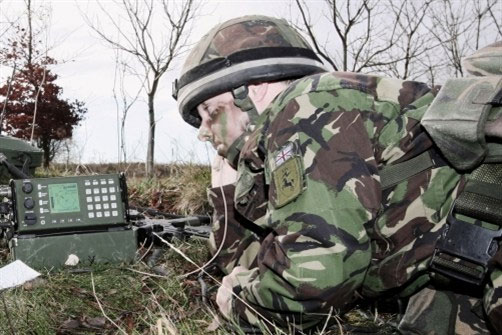Light Electronic Warfare Teams
Light Electronic Warfare Teams (LEWT) are elite British Army intelligence operatives who specialize in collecting and analyzing enemy communications. Fielded by 14th Signal Regiment (Electronic Warfare), the Royal Corps Of Signals, these small teams deploy alongside forward elements, including Special Forces (SAS/SBS) and 16 Air Assault Brigade recce units such as the Pathfinder Platoon.
LEWT Role
LEWTs use sophisticated equipment, including hand-held scanners, to gather tactical signals intelligence (SIGINT). In Afghanistan, LEWTs listen in to Taliban radio traffic in order to evaluate their tactics and disposition. They can also track the signal's origin using direction finding equipment. LEWTs may also deploy jamming devices, including unattended systems, that can disrupt enemy communications by jamming multiple frequencies simultaneously.
LEWTs may carry out their role from static platforms at forward operating bases or go out on patrols with infantry units. They may also deploy in specially-adapted vehicles containing attennae and listening / range finding equipment.
Light Electronic Warfare Teams perform a similar function to the radio reconnaissance teams in Y Squadron, 30 Commando IX, 3 Commando Brigade.
LEWT Organization
As of September 2014, 14 Signal Regiment (Electronic Warfare) is part of the 1st Intelligence Surveillance and Reconnaissance Brigade.
Deployed LEWTs are typically made up of patrols of up to 4 soldiers from the Royal Signals and Intelligence Corps. A LEWT patrol may include an Electronic Warfare Systems Operator who operates the listening devices, an Operator Military Intelligence - an Intelligence Corps analyst who processes the incoming traffic and a Communications Systems Operator who relays the intelligence up the command chain via radio.
All members of a LEWT are cross-trained in each other's roles. LEWT analysts receive language training to enable them to understand enemy radio chatter, although they may also emply a local interpreter, or 'terp' to translate the transmissions. LEWT members are parachute trained.
14th Signal Regiment (Electronic Warfare) consists of 4 field squadrons (223, 226, 237, 245), a support squadron and a Joint Electronic Surveillance Centre Troop. Each field squadron is aligned with an Army deployable brigade.
- 223 Signal Squadron – 12th Mechanised Infantry Brigade
- 226 Signal Squadron - 16 Air Assault Brigade
- 237 Signal Squadron - 1st Infantry Brigade
- 245 Signal Squadron - 20th Armoured Infantry Brigade
They also provide a detachment to 18 (UKSF) Signals which operates in support of the Special Forces.

LEWT Deployments
14th Signal Regiment has deployed Light Electronic Warfare Teams in support of operations in the Falklands (1982) and the Persian Gulf (Operation Desert Storm). LEWTs supported operations in the Former Republic of Yugoslavia and in Kosovo. LEWT patrols supported 16 Air Assault Brigade elements during the invasion phase of Operation Telic (Iraq, 2003). LEWTs have deployed attached to the Brigade Reconnaissance Force of various army brigades deployed to Afghanistan. Press reports in May 2014 indicated that British Special Forces operating in Kenya were being supported by Light Electronic Warfare Teams.








